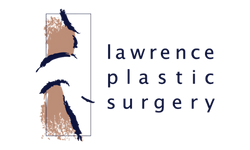Otoplasty
Otoplasty Overview
Otoplasty is a procedure performed to reshape the ears, typically to make them less prominent and correct abnormalities in the shape of the cartilage. We have successfully performed this procedure on both adults and children. Although there is typically no significant functional benefit, patients find it very worthwhile to restore their ears to a more normal appearance.
Best Candidate
In children, we generally like to wait until the child is around 5-6 years old or older before undertaking correction. This allows for the ear to grow and reach nearly the adult size before surgery is performed. We feel that parents should not push their children to undergo correction of their ears, but wait until the child themself expresses concerns over their appearance. Under these circumstances the child is generally much more cooperative and a willing participant in the surgical process.
Beyond age 5-6 years there is really no significant benefit from waiting, nor is there any downside to putting this off for several years. Otoplasty may be performed in both children and adults with good results.
First Visit
At your initial consultation, we will evaluate the face and ears, review photographs, take measurements and discuss how we can correct any abnormalities. We’ll review the procedure, discuss how it is performed, show photographs, , and come up with an operative plan tailored to the deformity. The most common procedure, correction of prominent ears, involves an incision in the fold behind the ear which allows us to reshape and fold the cartilage, bringing the ear closer to the head. Other abnormalities, such as abnormal earlobe shape and position, can be corrected at the same time.
The Procedure
We can perform this procedure in the office under a local anesthetic or in the operating room. Especially for children, the operating room is preferred so the patient can be asleep during the procedure. Through incisions behind the ear we will reshape and fold the ear cartilage to create a more normal appearing ear with less prominence. The procedure generally takes around 2 hours and the patient is discharged home in a headwrap type dressing. The following day, this is switched to a less restrictive dressing in our office.
Recovery
The pain following the procedure is generally mild. Most patients take oral pain medication for a day or two following surgery, then switch to Tylenol or similar medication. Regular activities can be resumed in about 24 hours. Swelling and bruising are common following surgery, then fades gradually over the next week or two. Sutures behind the ears are removed at 7-10 days. We usually perform a slight overcorrection of the ears, as some correction may be lost over the first few months following surgery
Insurance
Insurance coverage may be available for the correction of ear deformities in children when there is a significant abnormality present. We can submit photographs and information to your insurance company prior to the procedure to determine if it will be considered a covered procedure. This process generally takes 2-4 weeks. Coverage for adults desiring correction is generally not available.
Fast Fact
90% of ear growth occurs by age 5. Growth continues after that time at a much slower rate.
Financing & Payment Options
For information regarding insurance and payment options, please visit our Financing page. We can give you price information prior to the procedure so you can understand your financial obligations.
Patient Forms
Please fill out paperwork at least 24 hours before your scheduled appointment.
